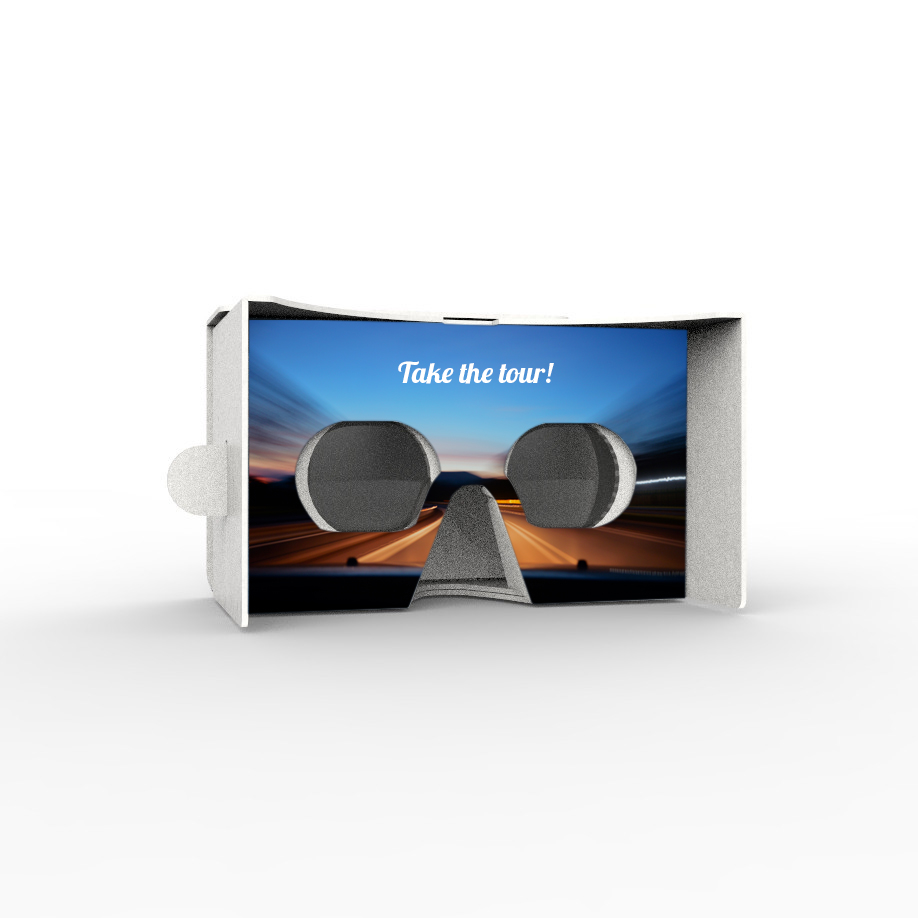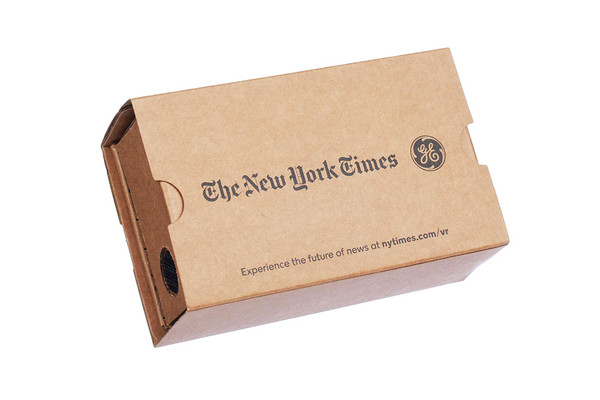 But what use can these products have promotionally? The question has already been answered by several large companies that are already using Google Cardboard like products in several different ways. Last month on our website I posted a blog detailing what I thought would be the top three trends in promotional merchandise this year, in this I mentioned the concept of VR headsets being used alongside experiential marketing.
But what use can these products have promotionally? The question has already been answered by several large companies that are already using Google Cardboard like products in several different ways. Last month on our website I posted a blog detailing what I thought would be the top three trends in promotional merchandise this year, in this I mentioned the concept of VR headsets being used alongside experiential marketing.
I used the example that if an estate agent gave out the cardboard headset to prospective buyers, they could send the buyers ‘virtual tours’ of properties on sale, and if the buyer then needs to contact the estate agent, their contact details are right there printed on the headset. Another idea derives from a practice that already happens in the automotive sales industry, where a

salesman would video a tour of the inside and out of a vehicle, outlining the unique selling points, as they are videoing them, even showing some of the functions in use. Now if you translate this to virtual reality, an automotive sales company can do a 360 degree video of every vehicle that comes in, inside and out, outlining the functions etc. and when someone shows interest send them a fully branded VR cardboard headset, with access to the videos of the vehicles they have interest in. Almost all experiential services could benefit from ‘taster virtual reality tours’ tourist excursions could be revolutionised with these first person experiences, I can literally think of hundreds of ways this technology can be used to benefit companies in several different sectors.
 As I mentioned before large companies have already started using these products promotionally in their own unique ways, a very current fantastic example is the New York Times, whose campaign created a milestone in VR history. Early last November The New York Times launched their VR mobile app, and on the following weekend sent out Google Cardboard headsets to every home subscriber, this means they sent out over a million VR headsets across the USA. This is an incredible step forward in the world of virtual reality, the NYT VR app’s first 360 degree video will show the struggle of three refugee children; this video was produced in partnership with VRSE.
As I mentioned before large companies have already started using these products promotionally in their own unique ways, a very current fantastic example is the New York Times, whose campaign created a milestone in VR history. Early last November The New York Times launched their VR mobile app, and on the following weekend sent out Google Cardboard headsets to every home subscriber, this means they sent out over a million VR headsets across the USA. This is an incredible step forward in the world of virtual reality, the NYT VR app’s first 360 degree video will show the struggle of three refugee children; this video was produced in partnership with VRSE.
It is important to remember that we are still in the very early stages of mass consumer adoption with this technology, and several of the world’s largest organisations are already using this technology for promotional uses, companies like Coca Cola, Volvo and Disney etc. In the promotional product industry companies are always looking for something different, something new, something that provides their customers, or potential customers, with a brand experience that stays in their mind, and this is exactly what Google Cardboard does. Promotional Virtual Reality has only just begun and who knows where we will be in 20 years from now, we could have food companies emailing taste tests of their food, we could have perfume companies sending you glimpses of their latest scent, we could even run the worldwide marathons, from the comfort of our living room, the opportunities are virtually endless.